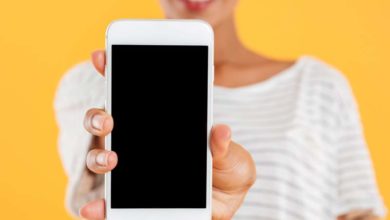Genuine Procedure To Get A Free Government Phone
In collaboration with some wireless providers in the US, the federal government offers Lifeline benefits to qualified members based on set eligibility criteria. Recently, almost all providers got approved as Emergency Broadband benefit Providers. The Lifeline Program allows the US government and cell phone providers to avail free service plans and free phones. Currently, you can receive a free government phone in more than 40 states; but the program is highly spreading in new states.
Most importantly, the Lifeline program is a sponsored initiative by the Federal government to provide a free government phone at a discount on phone service for qualifying low-income households. This support ensures that all American citizens have the benefits that phone service offers, including the ability to connect to jobs, family, and emergency services. Additionally, Lifeline is a brand of the Universal Service Fund and is available to qualifying low-income consumers in every territory, state, commonwealth, and Tribal land.
Fortunately, this government program is right for you for those who struggle with cell phone monthly payments. In this article, you will get a guideline on how and what you require to qualify for the Lifeline program, in addition to the wireless carriers that provide free government phones in tribal and non-tribal lands in the US. Finally, if you currently stay in a state that lacks free cell phones services, you can still qualify for free landline.
Qualification For A Free Government Phone Via Lifeline Program
i) Through Participation In A Government Assistance Program
Many people, especially senior citizens, qualify for Lifeline government cell phone service through participating in a state or government assistance program. If you are in any of these programs, you may be eligible for other financial assistance. However, to prove you qualify for Lifeline by participating in a state or government assistance program, you must avail a copy of your approval letter, ID card, or any valid document showing you are currently in one of the qualifying programs.
In most cases, the state and government assistance programs differ by state, but the most common programs found in all states that include:
- Medicaid
- National School Lunch Program – Free Lunch Program Only
- SNAP – Supplemental Nutrition Assistance Program or Food Stamps
- Temporary Assistance to Needy Families (TANF)
- Food Distribution Program on Indian Reservations (FDPIR)
- Supplemental Security Income (SSI)
- Federal Public Housing Assistance (Section 8)
- Low-Income Home Energy Assistance Program (LIHEAP)
- Bureau of Indian Affairs General Assistance
- Tribally-Administered Temporary Assistance for Needy Families (TTANF)
- Food Distribution Program on Indian Reservations (FDPIR)
- Any other Government Assistance Programs (varies by state)
Notably, every state has its state-specific assistance programs, and you may qualify if you are a member of one of these. However, if you don’t find the program you participate in above, please confirm with your state. You may still qualify by participating in a state or government assistance program.
On the other hand, if you do not qualify for a state or government assistance program, you may qualify for Lifeline assistance on the criteria of having a low income as described below.
ii) Through Having A Low Total Household Income
You can also qualify for the Lifeline government assistance program if you have a low total household income. To qualify through these criteria, you must prove that your total household income is at or below your state’s Federal Poverty Guidelines.
Notably, understand that your total household income comprises all of your household sizes, including dependents. It also involves you and your dependents’ income that is taxable and non-taxable. It includes salary, interest, wages, spousal and child support, dividends, grants, gifts, allowances, social security, rental income, inheritances, pensions, lottery winnings, and all other sources of income.
However, student aid, allowances, military housing, and small cash jobs get excluded from the gross household income. You may qualify for a free government device if you pass the Federal Poverty Guidelines for your state. Additionally, you’ll have to prove your income is at or below 135% of the Federal Poverty Guidelines. Essentially, the more your household size, the simple it is to qualify for free government cell phone services and an inexpensive cell phone plan.
Recommended Articles
What Phones Are Compatible with Safelink
What Phone Companies are Compatible with AT&T
Who Has the Best Deals on Cell Phones Right Now
Things You Need To Apply for A Free Government Phone
Before you make an application for the best free government phone, there are specific Lifeline restrictions you need to understand that include:
- Only one Lifeline service account is permitted per household.
- Households may not own a Lifeline cell phone from more than one Lifeline service provider.
- The Lifeline services are non-transferable.
When making an application, go to the provider of your choice website and search for the keyword “Apply” to fill out and submit an application. This application form requires some personal information such as:
- Your first and last name
- Your Address
- How you qualify, whether SNAP, TANF, SSI, WIC, Medicaid, Free Lunch Program, etc.)
- Your Date of Birth
- Your social security number’s last four digits
Types of documents required based on income qualification criteria:
- Child Support documents
- A payroll statement or current check stubs
- A letter from Unemployment/Workman’s Compensation
- A current Federal Tax Return
- Social Security benefits letter
- A recent copy of your W-2 forms
- Veterans Administration benefits letter.
However, if your cell phone provider cannot qualify your application, they will reach out to you and inform you there has been a TPIV failure. In this case, you will require providing another type of document once more. Immediately that submission gets approved, you can get your phone.
Other Types Of Acceptable Documents Are:
- Driver’s license (unexpired)
- Social Security card
- Naturalization papers
- Birth certificate
- Military discharge papers
- Current passport
- Tribal Identification
Best Providers That Offer Free Government Phone
1) SafeLink Wireless
SafeLink Wireless is the oldest of America’s largest free government carrier that offers cell phone service to more than 4 million customers in 31 states plus the District of Columbia and Puerto Rico. This company provides a free cell phone and up to 350 free minutes for local and domestic long-distance (for the first three months, receive 500 free minutes) and unlimited texts every month to eligible customers.
Now, SafeLink Wireless provides free cell phones in Alabama, DC, Delaware, Arkansas, Arizona, Connecticut, Florida, Georgia, Illinois, Kentucky, New Hampshire, New Jersey, Louisiana, Maine, Maryland, Massachusetts, Michigan, Mississippi, Missouri, Nevada, New York, North Carolina, Ohio, Puerto Rico, Rhode Island, Pennsylvania, South Carolina, Utah, Virginia, Tennessee, Texas, West Virginia, Washington, and Wisconsin.
2) Assurance Wireless
Assurance Wireless is the second-biggest provider of free cell phone service in the US, and it’s brought to you by Virgin Mobile. Assurance offers participants a free government smartphone, usually an Android, based on availability, up to 500 monthly talk minutes, and unlimited texting.
Currently, Assurance operates in Alabama, District of Columbia, Florida, Georgia, Idaho, Illinois, New York, North Carolina, Indiana, Iowa, Arkansas, Arizona, California, Colorado, Connecticut, Delaware, Kansas, Kentucky, Louisiana, Maine, Maryland, Massachusetts, New Jersey, New Mexico, Michigan, Minnesota, Mississippi, Missouri, Nevada, New Hampshire, Ohio, Oregon, Pennsylvania, Rhode Island, South Carolina, Washington, Tennessee, Texas, Utah, Virginia, West Virginia, and Wisconsin.
3) Qlink Wireless
This company provides smartphones to all new customers on the program. Besides, if you have an older phone, Qlink allows you to upgrade to modern compatible smartphones. QLink Wireless also provides free government cell phones that feature a basic plan, but the good news is the unused minutes and texts roll over to the next month’s allowances. QLink currently offers free data 1GB along with 1000 monthly minutes, plus unlimited texting.
Moreover, QLink Wireless also provides a bonus program that motivates you to refer your friends and family to the company. You receive an additional 100 minutes for every successful applicant. Q Link Wireless services are available in Arkansas, Arizona, Kentucky, Louisiana, Colorado, Georgia, Idaho, Indiana, Iowa, Kansas, Maine, Maryland, Missouri, Nevada, Ohio, Michigan, Minnesota, Oklahoma, Pennsylvania, South Carolina, Texas, Utah, Vermont, Washington, Puerto Rico, Rhode Island, West Virginia, and Wisconsin.
4) Access Wireless
Access Wireless is also a significant company in the free government phone providers program. This carrier stands out among other carriers in that they provide free touch screen government phones given to new subscribers. Additionally, they offer upgrades to customers with basic phones.
This carrier offers free 1000 minutes of talk, 50MB of data, and unlimited text. They also give discount-paid plans for customers who don’t qualify for the Lifeline program. The discounted packages include unlimited talk and text, no data, wifi for $20, unlimited talk and text, a 3GB plan for $35, 10GB data, unlimited talk, and text for $50. Additionally, Access Wireless also provides a bring your own phone (BYOP).
5) Assist Wireless
Assist Wireless features various free government phone plans, and you can apply for the latest device by signing a contract and surrendering your older phone. If you tap this deal, you get additional $15 credit to your account and 1GB of free data.
Assist Wireless also provides discounted prepaid plans and is available in Arkansas, Missouri, Maryland, and Oklahoma, which features specialized plans for both tribal and non-tribal subscribers.
6) enTouch Wireless
enTouch Wireless, also known as Boomerang, provides free cell phones with 500 free minutes and 100 text messages every month, plus 10MB of Data. You can add a 500MB data plan, with call and text limited to 100 per month. Non-tribal California residents receive unlimited calls and texts in addition to 500MB, but tribal customers receive unlimited calls and texts in addition to 2.4GB of data.
However, non-California residents within tribal communities also receive a larger 750MB data pack featuring unlimited texts. enTouch Wireless is available in Arizona, California, Colorado, Arkansas, Georgia, Hawaii, Idaho, Indiana, Iowa, Kansas, Kentucky, Louisiana, Minnesota, Maryland, Michigan, Mississippi, Missouri, Nebraska, Nevada, North Dakota, Ohio, Oklahoma, Puerto Rico, Rhode Island, Oregon, Pennsylvania, South Carolina, South Dakota, West Virginia, Texas, Washington, Wisconsin, and Wyoming, but is currently expanding to cover more states.
Final Words
With the above-listed wireless providers, the US federal government gives eligible American residents free government smartphones. However, not everyone qualifies for this benefit; you must attain some eligibility requirements to qualify for the lifeline program. Besides, you provide proof of eligibility whether you qualify for the program based on federally assisted program participation or through your income poverty level guidelines.
Contents
- Qualification For A Free Government Phone Via Lifeline Program
- i) Through Participation In A Government Assistance Program
- ii) Through Having A Low Total Household Income
- Things You Need To Apply for A Free Government Phone
- Best Providers That Offer Free Government Phone
- 1) SafeLink Wireless
- 2) Assurance Wireless
- 3) Qlink Wireless
- 4) Access Wireless
- 5) Assist Wireless
- 6) enTouch Wireless
- Final Words





